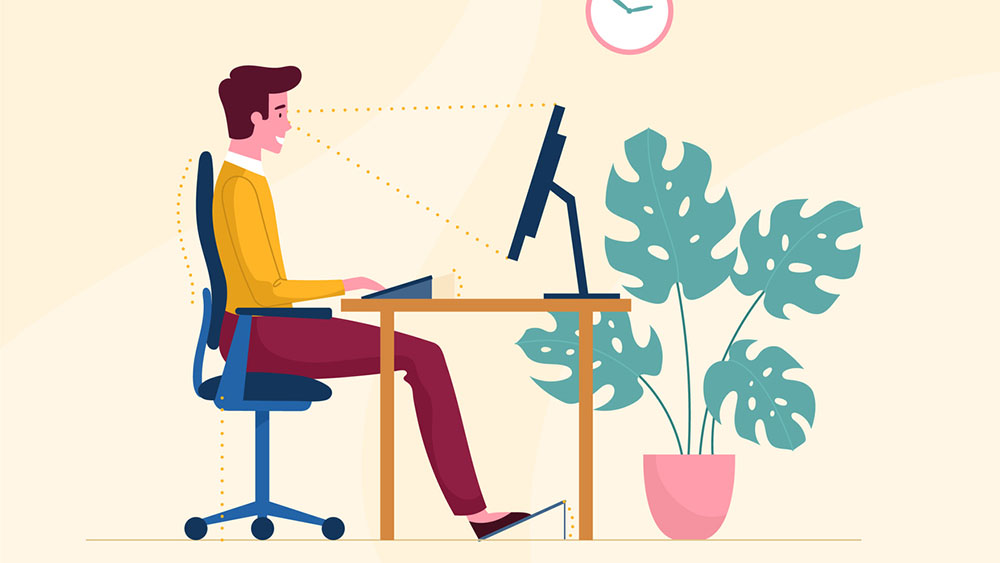Navigation auf uzh.ch
Navigation auf uzh.ch

Working in an environment that is tailored to our personal needs keeps us motivated, productive and healthy. Stating the obvious perhaps – but it can often go forgotten in the everyday routine. With office work in particular, we quickly neglect even simple measures and find ourselves with tension, back or neck pain and tired eyes.
Michaela Horn, an expert in occupational medicine at UZH, explains below how to set up an ergonomic workstation and gives some tips to counteract classic ailments caused by office work.
Michaela Horn: If you work at a computer every day, you should make sure that your office chair, desk and monitor are aligned and individually adjusted.
In addition, you need a big enough work surface and computer screen. Good lighting with sufficient daylight and a comfortable room temperature (around 20-22°C, humidity approx. 40-60%) are also important. Cables should be carefully arranged to avoid tripping accidents.

What should be considered when adjusting the chair, desk and monitor?
The chair is the starting point when optimizing your workstation. First adjust your chair to a comfortable height and position, then the height of the desk, and lastly the screen. Remember, even a different pair of shoes can mean you need to adjust your desk and chair height.
Other things to consider are:
When adjusting the chair, make sure your feet touch the floor. The angle between your upper and lower leg and between your thigh and torso should be about 90°. The distance between the front edge of the seat and the back of your knees should be at least two fingers wide. Next adjust the backrest. It should fit your size and shape. Release the backrest for dynamic sitting (backrest rocking mechanism) and make sure that your back touches the backrest with light pressure. The lumbar support (the protruding curved lower area of the backrest) should be adjusted to approximately belt height.
When adjusting the desk, first roll your chair close to the edge of the desk and adjust the desk height. The desk height should correspond to the height of your elbows (with the angle of the elbow joint at 90°). This way, your forearms rest loosely on the desk and your shoulders are relaxed.
The same principles apply for standing at a standing desk. Depending on your height, the optimum height for a standing desk is usually between 95 and 125cm.
When adjusting the screen, adjust the height of your monitor so that you can look over the top edge without having to lift your head. Your eyes should be looking slightly downward. The distance of the monitor should be such that you can see every part of the screen without moving your head. Depending on the activity, a distance of 50 to 70cm is recommended. If you use two screens, they should be arranged alongside each other at the same height as far as possible.
In most cases the monitor is too high (or too low). Lifting your head and pushing it forward can cause a shortening of the neck muscles which leads to neck tension. Adjusting the height of the monitor can relieve the tension.
Our eyes have to work hard when looking at screens and need regular breaks.
Sitting for long periods of time and an improperly adjusted desk or chair can shorten the hip flexor or irritate the sciatic nerve. This can trigger pain in the buttocks, which can also radiate to the legs.
When working at your desk, change your position regularly, stand up sometimes and move around often. The 40-15-5 rule is recommended: 40 minutes of seated work, 15 minutes of standing work, five minutes of movement.
You can order these tools – with the approval of your line manager – via the P4U portal.
We are happy to come to your office or lab to advise you taking into account your individual needs and physical condition. To make an appointment for an assessment and consultation, please write an e-mail to arbeitsmedizin@su.uzh.ch or phone us on +41 44 63 54117.